► Electric cars versus winter
► How EVs perform in cold weather
► Lower battery range, toasty cabins
Winter has officially hit the UK and the plummeting temperatures have also come with a nasty side effect for electric cars: many EV owners are realising that their batteries’ performance and driving range suffers significantly in cold weather.
On this page we explain what low temperatures mean for EV range, why it’s such a problem for electric rather than combustion cars, and look at the science behind battery technology. Read on for a few tips on how to eke out a few extra miles from your electric vehicle when the temperature plunges below zero.
How does cold weather affect electric cars?
Just like the battery in your smartphone or laptop, the batteries in electric cars rely on controlled chemical reactions to store and release electricity – and, like all chemical reactions, they’re sensitive to temperature. Get an EV battery outside its optimum operating temperature, and it’ll be less efficient and run out of charge faster as a result.
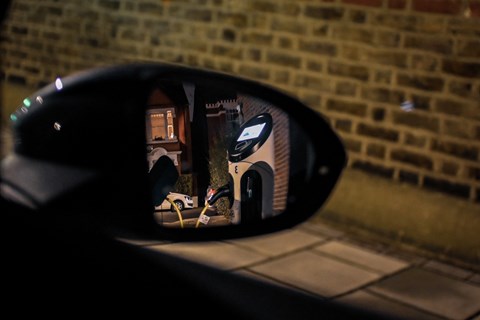
Most EVs warm up their car’s battery to the correct temperature, but this also consumes precious energy. The end result? When the mercury plummets, so does EV battery efficiency and available range.
More heating, more problems
Cold weather typically brings additional demands on a car’s systems: in a wintry snap most drivers will turn the cabin temperature up, activate demisting and switch on heated seats and steering wheels, where fitted – all features that make us toasty, but draw more power from the batteries on board. Once again, the range takes a hit.
CAR magazine has lived with enough EVs in winter to experience the fall in performance first-hand. Read on for what we’ve learned about the range of electric cars in cold temperatures plus a few tips on how you can boost your mileage on each charge.
Electric cars in winter: what does happen to range in cold weather?
Our experience suggests that extremely cold weather will typically trim somewhere between a fifth and a third off the range of your EV – and sometimes significantly more. It affects every electric vehicle, but some seem better able to cope with snow and ice than others.
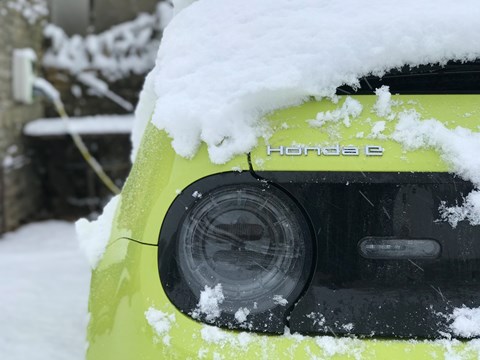
When we lived with a Honda E city car (above), its tiny 35kWh lithium-ion battery could only muster a claimed 125 miles, according to the official WLTP claim; in practice, that meant 100 miles of usable range in the summer, plunging to 80-90 miles in winter months. This significantly restricted its viability, in our experience.
Similarly, we ran a Tesla Model S long-term test and the 85kWh-batteried saloon never showed a range below 250 miles in winter, compared with 265 miles in more clement temperatures. It’s worth pointing out this was an approved used, 65-reg example.
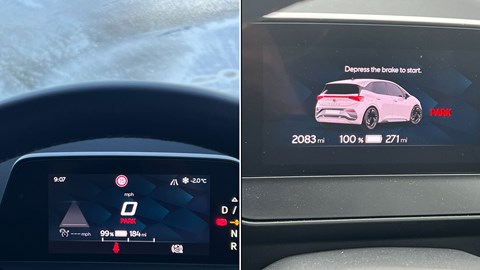
Our digital editor Curtis Moldrich ran a nippy 77kWh Cupra Born (above), but found his range severely affected by the cold snap. During summer the electric Born could easily extend its range to over 200 miles, regularly showing 270 miles on the display. Fast forward to the ice age of winter 2023, and the estimated range frequently dropped close to 180 miles. That’s a loss of around a third of the range!
CAR’s sister website Parkers.co.uk lived with a Mazda MX-30 electric car for half a year and found that, when fully charged, the range showed 90 miles instead of 110 in warmer months. Its battery capacity was 35kWh, similar to the Honda E’s.
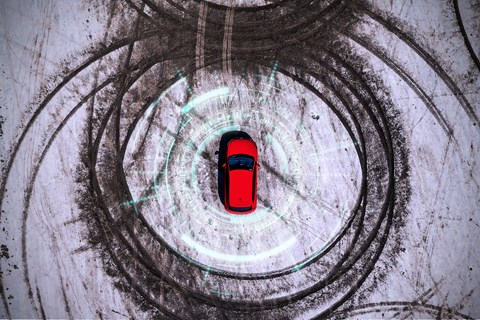
The trend is clear: cold weather = less range. Check out also Citroen’s official range calculator, which shows the e-C4‘s range as follows in different temperatures:
- Electric range, 20C: 217 miles
- Electric range, 10C: 194 miles
- Electric range, 0C: 175 miles
- Electric range, -10C: 141 miles
Using Citroen’s official data, that suggests a significant fall in performance in freezing conditions: a whopping 76 miles less, or a drop of 35% if taken well below freezing. It makes for sobering reading
Official electric car winter range tests
This is a topic the Norwegian Automobile Federation (NAF) is particularly interested in. Norway has moved faster into EVs than any other country – and since it suffers extreme winter weather, motoring organisations test electric vehicle winter range annually to see how manufacturer claims stack up to real-world conditions.
In 2023, the event set a new winter driving range record with a standard Tesla Model S, which managed 329 miles in conditions between 0deg C and -19deg C before conking out. This beat the previous record of 324 miles, set in slightly warmer conditions by a Tesla Model 3 Long Range Dual Motor in 2022.
However, even that Tesla Model S performance represented a 16.4% drop compared with the car’s official WLTP claim of 394 miles.
The winner of the 2023 NAF test was the relatively obscure Maxus Euniq6. While this Chinese MPV (a smaller sibling to the Maxus MIFA 9 that’s set to be sold in the UK) may have managed only 197 miles in total, the result was just 10.5% shy of the official 220-mile claim. Which NAF holds up as an outstanding result.
So Tesla was beaten by a Chinese people carrier?
Yes, but that’s not the really interesting news. What you’re probably better focusing on is how some other, more familiar car makers fared – which is to say, rather badly.
For instance, the Mercedes EQE 300 and Skoda Enyaq Coupe RS fell over 33% short of their official driving range claims – that’s a third less than promised – and the BMW i7 xDrive60 and Volkswagen ID.5 Pro both came up over 28% short.
However it was the Toyota b4ZX – which has already faced criticism for misleading range claims – that came dead last, managing 200 miles versus a claim of 312, a shortfall of 35.8%, according to NAF.
How to maximise range of electric cars in winter
There are a few handy tips to extend the range of your electric car in cold weather. Be sure to charge up your EV at home, if you have charging facilities available. That way, you’ll start most journeys with a full charge.
Many EVs have a pre-heating function. On some models this is only available when the car is plugged in – it’s a great benefit to have, de-icing windows and warming the cabin to make driving in cold conditions quicker and comfier. We recommend using this function when plugged in, so you don’t eat in to your range before you’ve even left home.
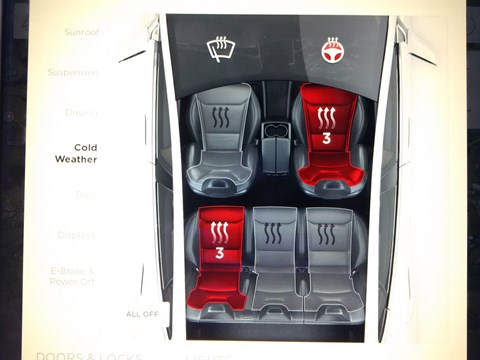
Be careful, too, with which accessories you use when you’re driving. Heating, seat warmers and other ancillaries (see Tesla Model S, above) will all draw charge and reduce your range. Don’t believe us? Try flicking the climate control off and on in most EVs; it can often grant you an extra 10 or 20 miles of range (a useful get-out-of-jail card for extending your range when you’re nursing a car low on charge).
Tesla fined in South Korea for inaccurate range claims in cold temperatures
Tesla fell foul of the authorities in South Korea for exaggerating what its cars are capable of in colder weather in winter 2022-23. The Korea Fair Trade Commission (KFTC) fined the manufacturer 2.85 billion won (£1.9 million at the time) for failing to fully inform customers about the range potential of the cars in cold temperatures.
Although claimed battery ranges were calculated by official WLTP testers, they didn’t factor in really cold weather, and certainly not every variation of wintry temperatures, prosecutors found. The KFTC said that Tesla had exaggerated the ‘driving ranges of its cars on a single charge, their fuel cost-effectiveness compared to gasoline vehicles as well as the performance of its Superchargers‘ on its official local website since August 2019 until recently.
According to the KFTC, Teslas’ range drops by as much as 50% in extreme cold weather.
Can tech help solve the problem?
Better, more efficient batteries that are less susceptible to cold are being developed all the time. For instance, battery tech company StoreDot has come up with a new type of battery cell that it claims can still deliver 70% of its charge in temperatures of -20deg C – colder than the conditions during the NAF test. At -10deg C, range drops by 15%.
It’s also worth noting that electric car batteries can struggle to fully recharge in very cold temperatures. StoreDot claims its latest XFC battery cells can recharge up to 80% of their capacity at -10deg C.
Anything else to know about EVs in winter?
Apart from energy conservation, electric cars are subject to the usual rules of motoring in winter. For example, we strongly recommend winter or all-seasons tyres like the Bridgestone Blizzak or Michelin CrossClimates to keep you going in cold or slippery conditions.
Our guide to the best winter tyres
Winter tyres provide a specific compound high in silica and tread pattern developed to give better traction in cold conditions. In our opinion, they are more useful to keep you motoring in snow and ice than all-wheel drive.
Note also that many electric cars have pop-out door handles for their aerodynamic benefits; these can freeze shut in icy weather, as happened in our Honda E (above). On days like these, you can’t beat a good old-fashioned sturdy grab handle…
It’s all good intel to have, so you’re not surprised when your EV plays up in cold weather. After all, anyone coming from a petrol or diesel car won’t expect their range to shrink during a snow flurry.
Got any tips on maximising the range on electric cars in winter? Be sure to sound off in the comments below